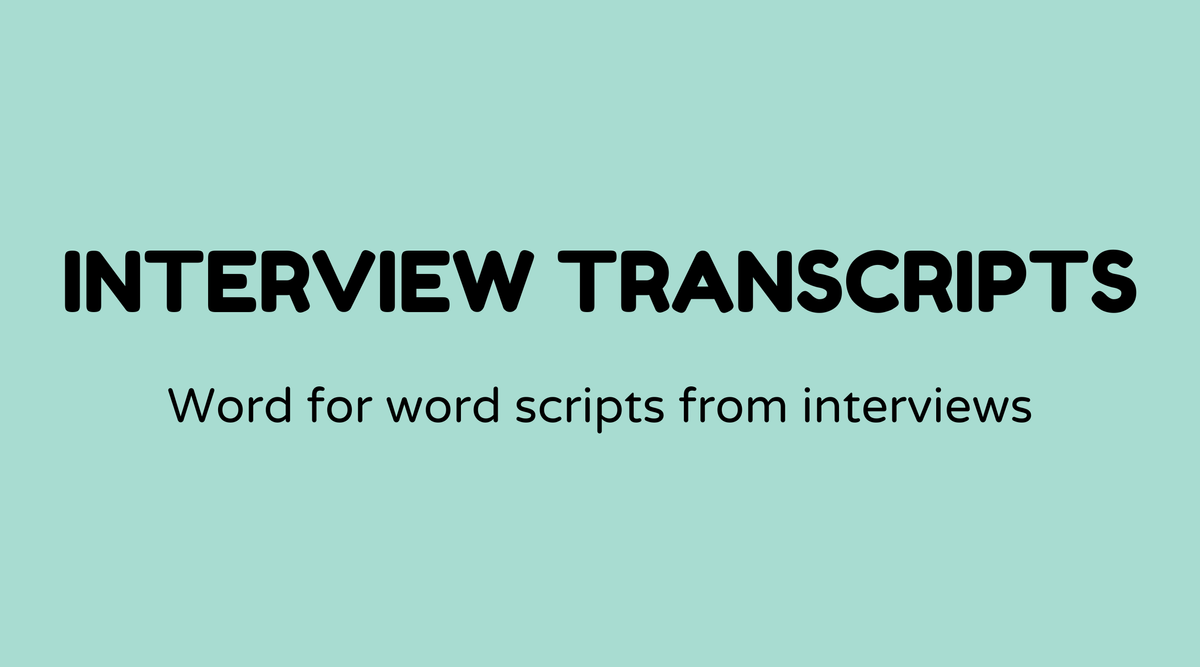Interview transcripts

Overview of Interview Transcripts
In the hiring process, interview transcripts play a vital role. They provide a comprehensive record of the dialogue between interviewer and interviewee. These transcripts serve as a written representation of verbal exchanges, fundamental for reviewing interviewee responses and evaluating candidate compatibility.
Importance of Interview Transcripts
Interview transcripts represent more than mere text. They offer valuable reference points for decision-making, ensuring clarity regarding discussions. Moreover, they help mitigate bias by providing objective data for analysis. These documents are also important for training and coaching initiatives, aiding the development of interview techniques for future candidates.
What Constitutes an Interview Transcript?
An interview transcript is a written document encompassing the entire conversation from an interview. This document may be presented verbatim or summarized, capturing dialogues, expressions, and at times, emotions. Transcripts can be produced through transcription services or software, ensuring accuracy and comprehensive content.
How to Create Interview Transcripts?
Developing accurate interview transcripts involves several steps. Initially, obtain high-quality audio or video recordings of interviews. With contemporary transcription software, these recordings can be turned into text relatively easily. However, for nuanced discussions, human involvement might be necessary to capture context and subtleties accurately. Lastly, editing for clarity and organizing the transcript improves its readability and usefulness.
Sample Agenda for Creating Interview Transcripts
-
Preparation for the Interview
- Ensure recording devices are operational.
- Determine transcript format (verbatim vs. summary).
-
Conducting the Interview
- Record high-quality audio/video.
- Note any important non-verbal cues.
-
Transcription Process
- Utilize transcription software or services.
- Review and edit for precision.
-
Review and Finalize
- Verify that all segments of the conversation are documented.
- Refine for clarity and readability.
Examples of Interview Transcripts
Example 1: Verbatim Transcript
This format captures every "um," "uh," and pause, providing a precise account. It is advantageous when examining the specific language employed.
Example 2: Summarized Transcript
Summarized transcripts convey the main points, emphasizing key responses without unnecessary filler. They are practical for quick reviews and highlighting primary ideas.
FAQs
How long does it take to produce an interview transcript?
- The duration depends on the length and complexity. Typically, transcribing one hour of audio may take three to four hours manually.
Can transcription software manage accents and background noise?
- Advanced software increasingly handles accents and minor noise, but problematic audio may still require human help for precision.
Are verbatim transcripts always essential?
- Not necessarily. Verbatim transcripts are valuable for legal contexts or in-depth analysis, while summarized transcripts often suit casual or internal needs effectively.
How can I maintain confidentiality with transcripts?
- Employ secure transcription services and ensure all participants sign confidentiality agreements if needed.
Can transcripts be translated?
- Yes, many services provide translation, but ensure the service preserves context and nuance.
What should I do if there’s an error in a transcript?
- Review and correct promptly. Highlight modifications to maintain transparency.



